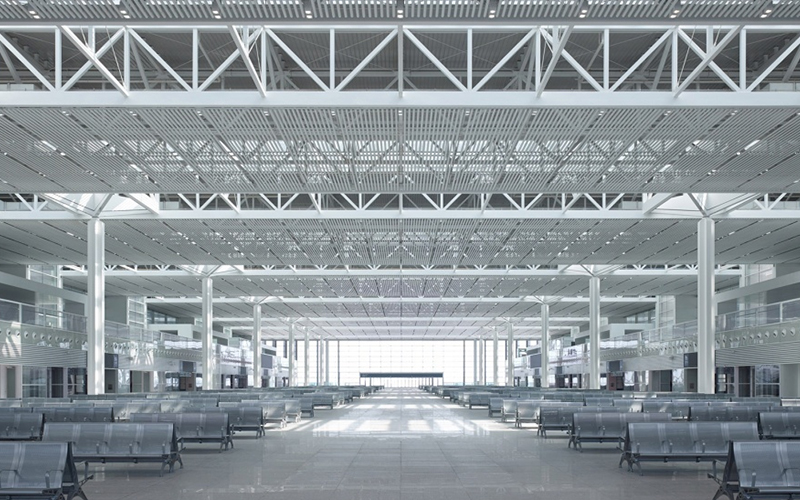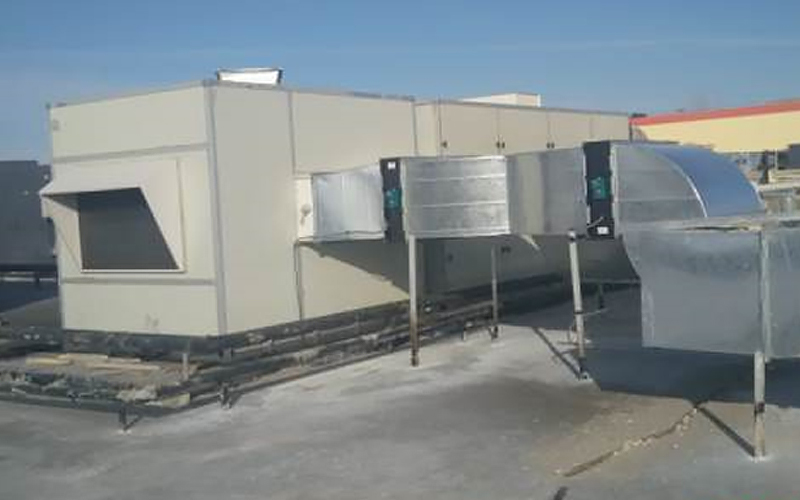Your current location:Home > Project > Liquid Desiccant Air Conditioner
Train Station
Industry Overview
The waiting hall of the train station has the characteristics of high density of people, large indoor humidity, and high demand for fresh air. At present, this type of place generally adopts the method of Freezing dehumidifier (using 7°C chilled water) to remove the sensible heat load and latent heat load in the station. This conventional air treatment method results in that the sensible heat load can be discharged by a high-temperature cold source (14/19°C), but has to be treated with a low-temperature cold source of 7°C with the dehumidifying process, resulting in a waste of energy quality. The climate in southern China is hot and humid, and the heat-humidity ratio required for indoor environmental regulation of the building varies within a large range. There are problems of over-allocation of cooling capacity or insufficient cooling capacity in extreme weather, which brings extremely difficult design. Moreover, there is a problem of mold growth on the surface of the evaporator in the Freezing Dehumidifying method, which seriously affects the indoor air quality.
The temperature and humidity independent control air-conditioning system is a new type of air-conditioning system that uses solution as the working medium to treat air humidity and high-temperature cold water to treat air temperature. The Liquid Desiccant Air Conditioner is driven by a heat pump, and the vapor pressure on the surface of the solution after cooling is extremely low. During the process of contacting with the air, it absorbs the moisture in the air and cools the air at the same time. The regeneration utilizes low-grade waste heat discharged from condenser, realizes the conversion of thermal energy to steam energy, and reduces the heat emission of the unit. On the one hand, the energy consumption is greatly reduced, and on the other hand, it can flexibly adapt to changes in the indoor heat-humidity ratio, and at the same time, it can significantly improve the indoor air quality.
Project Introduction
A train station in a city in the south has a building area of 10,000m². The city is located in the south of China. During the rainy season, the temperature is high and the humidity is high. The wet bulb temperature is higher than 28°C for more than 100 days throughout the year. The existing air-conditioning system uses low-temperature cold water as the cold source temperature and humidity treatment method, which consumes a lot of energy. In extreme weather conditions, due to the soaring wet load or even insufficient cooling capacity, the comfort is greatly reduced. The renovation of this project adopts the independent control method of temperature and humidity, and 6 sets of 6000 airflow Pre-Cooling type Fresh Air Desiccant Unit are added to deal with the latent heat of the air, and the existing air conditioning system is changed to a high temperature cold source to deal with the sensible heat of the air. After changing to high-temperature cold water, compared with the low-temperature cold water produced by the evaporator in the past, the existing refrigeration system has improved the refrigeration efficiency and reduced power consumption. The powerful dehumidifying capacity of the Liquid Desiccant Air Conditioner meets the processing requirements of different humidity loads at different times throughout the year, making it no longer difficult to handle humidity loads under extreme climatic conditions. The salt solution has the characteristics of non-volatile and strong stability, and also has the ability to kill microorganisms such as bacteria and viruses, which can purify the air and provide high-quality indoor air.

